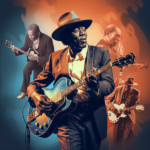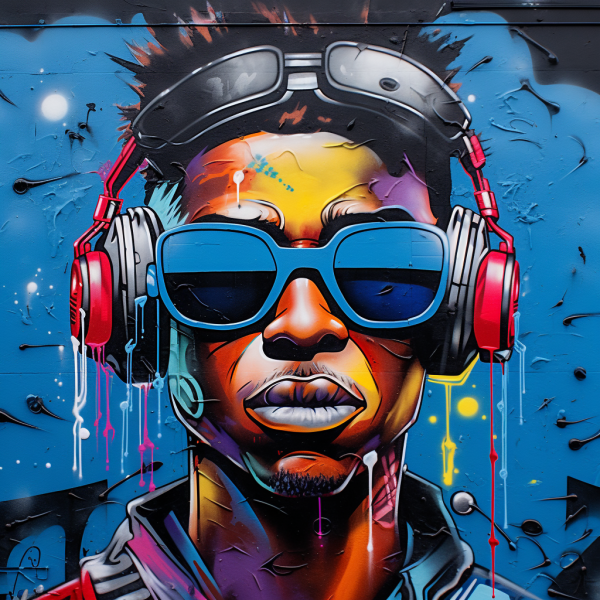Blues music, celebrated for its deep emotional resonance and poignant storytelling, has played a significant role in shaping the development of hip-hop and rap. In this comprehensive examination, we embark on an extensive exploration of the profound impact that blues music has had on these contemporary musical genres. We aim to delve into the historical foundations, delineate key elements, and elucidate the nuanced connections that have firmly established this symbiotic relationship.
The Historical Foundation of Blues Music
Blues music, born in the American South during the late 19th century, is deeply rooted in the African American experience. Emerging as a potent form of expression, it provided a means to convey the pain, resilience, and struggles of Black communities during eras of immense adversity, including slavery and segregation. Blues’ identity was forged through a distinct 12-bar structural framework, soulful vocalizations, and the evocative sounds of instruments such as the guitar and harmonica.
The Lyrical Tapestry of Blues in Hip-Hop
Title: “The Profound Influence of Blues Music on the Evolution of Hip-Hop and Rap: A Comprehensive Exploration”
Introduction
Blues music, celebrated for its deep emotional resonance and poignant storytelling, has played a significant role in shaping the development of hip-hop and rap. In this comprehensive examination, we embark on an extensive exploration of the profound impact that blues music has had on these contemporary musical genres. We aim to delve into the historical foundations, delineate key elements, and elucidate the nuanced connections that have firmly established this symbiotic relationship.
The Historical Foundation of Blues Music
Blues music, born in the American South during the late 19th century, is deeply rooted in the African American experience. Emerging as a potent form of expression, it provided a means to convey the pain, resilience, and struggles of Black communities during eras of immense adversity, including slavery and segregation. Blues’ identity was forged through a distinct 12-bar structural framework, soulful vocalizations, and the evocative sounds of instruments such as the guitar and harmonica.
The Lyrical Tapestry of Blues in Hip-Hop
- The Art of Lyrical Storytelling: Blues’ storytelling prowess through lyrics naturally found resonance within hip-hop. Pioneering hip-hop artists, including Grandmaster Flash and The Sugarhill Gang, incorporated narrative elements reminiscent of blues lyrics into their compositions. This tradition of narrating life’s challenges and triumphs through lyrical eloquence became a hallmark of hip-hop’s lyrical style.
- The Blues’ Musical Palette: Hip-hop artists recognized the emotional depth of blues and frequently sampled blues tracks to form the basis of their beats and melodies. This practice infused hip-hop with the raw emotional power of blues, creating a blend that transcends musical boundaries. Notably, tracks like Eric B. & Rakim’s “I Know You Got Soul” cleverly sampled Bobby Byrd’s “I Know You Got Soul,” bridging the gap between blues and hip-hop.
- Social Commentary and Blues Heritage: Just as blues was a medium for addressing social issues, hip-hop artists like Public Enemy and N.W.A used their music to shed light on injustices faced by the African American community. This fusion of social commentary mirrored the blues tradition, aligning both genres in their pursuit of social change and justice.
Rap’s Rhythmic Innovation through Blues
- The Art of Rhythmic Expression: Blues’ rhythmic intricacies, inherent in its cadence and syncopation, left an indelible imprint on rap’s rhythmic structure. The syncopated rhythms and call-and-response techniques from blues naturally found their way into the lyrical and vocal delivery of rap. This infusion endowed rap with its distinct cadence and flow.
- The Emotional Resonance of Blues in Rap: Much like blues musicians, rap artists harnessed the emotional intensity of blues to convey their own experiences, emotions, and aspirations. Prominent rap figures such as Tupac Shakur and The Notorious B.I.G. drew deep inspiration from blues’ emotive qualities, crafting enduring and impactful compositions.
- Blues Instruments in Rap: Rap often integrates blues instruments, particularly the electric guitar, to infuse depth and flavor into their compositions. The inclusion of these instruments in rap’s rhythmic tapestry accentuates the connection between these two genres, culminating in a distinct and captivating sonic experience.
Conclusion
In conclusion, the profound influence of blues music on the evolution of hip-hop and rap is indisputable and enduring. From lyrical storytelling to rhythmic cadences and emotional resonance, blues has served as a foundational pillar for the development of these contemporary musical genres. This harmonious amalgamation has not only shaped the musical landscape but also enabled artists to address societal issues and forge deep emotional connections with their audiences. As blues continues to permeate the realm of hip-hop and rap, we anticipate this musical journey will evolve, creating timeless compositions that resonate across generations.









